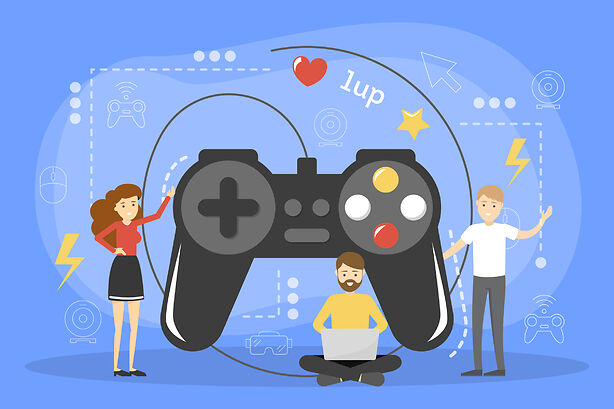Is Gamification likely to replace traditional training in corporate? Research conducted by Tracy Sitzmann shows the advantages of gamification in corporate training.

Training and Development happens to be one of the biggest expense headers in companies. On average, companies spend about 5% of an employee’s salary on training! There are good reasons why training programs are so much emphasized upon.
Training sessions are conducted to align the employees’ goals with the organization. Productivity, performance, skill-building, cultural aspects, efficiency, technical and social skills, etc., are just a few things people are trained for.
Anyways, have you heard of Games or Gamification getting to replace traditional training in the corporate setting? Well, yes Gamification is all set to revolutionise the training space for many reasons.
Even after investing so much into traditional corporate training, many companies face the uncomfortable end of attrition amongst their employees. Their productivity doesn’t meet the expected levels and hence leading to a lot of uncalled for leakage.
So, what can be done? Here, Gamification comes as a surprise solution.
Many experts show the direction towards a simple alternative. Gamification. What do games have to do in the place of work? If that’s what you’re thinking, we have something to discuss.

What is Gamification?
When you’re playing a game (any game), there’s a task you’ve to complete. The task could be split into multiple levels or mini-tasks, or each level of the game could be the final task all by itself.
You’ll have limited resources and few abilities. There will be dangers along the way of completing tasks. You’ve to understand how it works, observe the characteristics, and play to complete the task. When you do and move to the next level, you’ll be rewarded in terms of material, money, or game life.
You collect them and use them wisely to play more. If you misuse your resources unnecessarily, you’ll be left with nothing to accomplish your tasks.
It can be directly related to any business. The idea is to simulate the gaming scenarios during the training sessions to engage, motivate, and bring the best out of the employees.
How is Gamification Utilized in the Corporate Training Process?
During the training process, the employees’ attention should be on the training. But unfortunately this is something that doesn’t happen most of the time. Focussing our attention on mundane training programs requires a herculean effort.
1) If the program is mingled with gaming elements, it would capture the attention of the trainees. It hooks their attention.
2) Employees need motivation. We human beings are wired that way. If we get recognized for something, it gives us motivation. Giving rewards and recognition to everyone for completing minor tasks during the training session increases their motivation.
3) By recognizing every individual and motivating them, employees come out of their comfort zone, participate, voice their suggestions and opinions. Overall it boosts their morale as well as that of the company.
4) It reduces the training duration by a considerable amount, which saves a lot in terms of money to the companies.
5) Simulating gaming scenarios in the training session increases the competition among the employees. They push themselves to excel at what they do and try to outdo others. By introducing team simulations, organizations can develop camaraderie among them.
6) It helps them learn on their own and gives them a peek at what would happen in a real work environment. It assists them in taking conscious and calculated risks. When it fails, they could learn from their mistakes.

Will gamification replace traditional training?
We cannot say anything definitive. Because most of the companies still prefer the traditional dogmatic training, they need to get out of their comfort zone and try. Some have created a balanced mix of gaming elements into the traditional training process.
To get a deeper understanding of it, let’s analyze some statistics from Tracy Sitzmann.
Here are a few findings of his research on using Gamification-
- Completed tasks increased by more than 300% in the organizations.
- The Retention rate is increased up to 90%.
- Increases the conceptual knowledge of the individual by 11%
- Increases the self-confidence of the individual to navigate by more than 20%
- A Drastic increase in engagement and the productivity rate.
- The Attrition rate is visibly decreased and promotes team bonding within the organization.
Statistics do lean towards the replacement of traditional training, don’t they? But we have to take this result with a pinch of caution. People are different in terms of their interests, learning capacity, speed, and the ability to retain.
Instead of designing a blanket training curriculum, it could be modified to accommodate everyone. Elements of games should be introduced gradually to pique their interest.
Concluding notes
The established Forbes top companies have been practicing gamification in their training and day-to-day operations for a long time. It is not a new concept. They all are doing great and attract talents from all over the world. If you’d like to know more about gamification, check out amplayfy.




